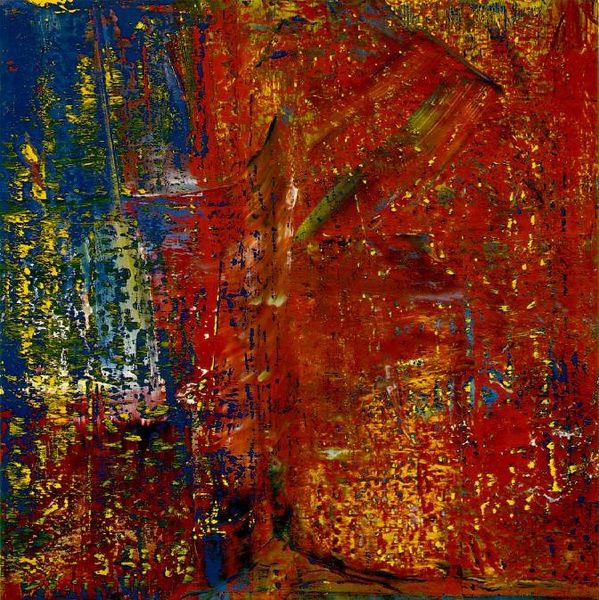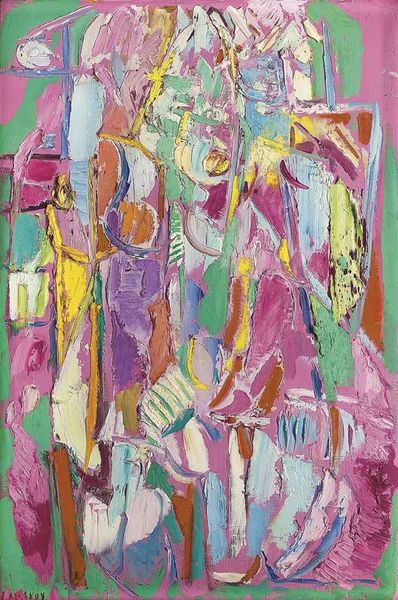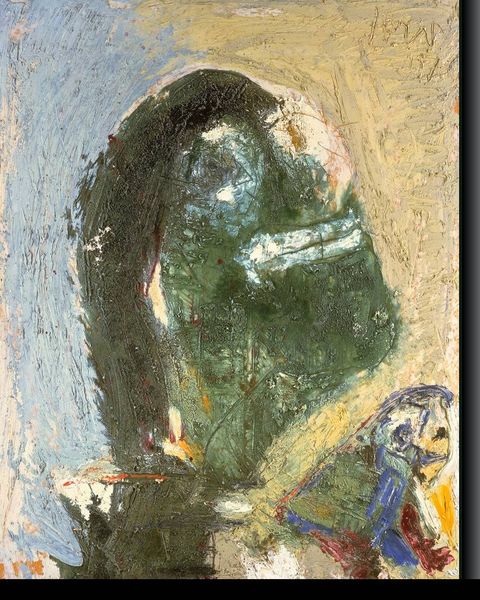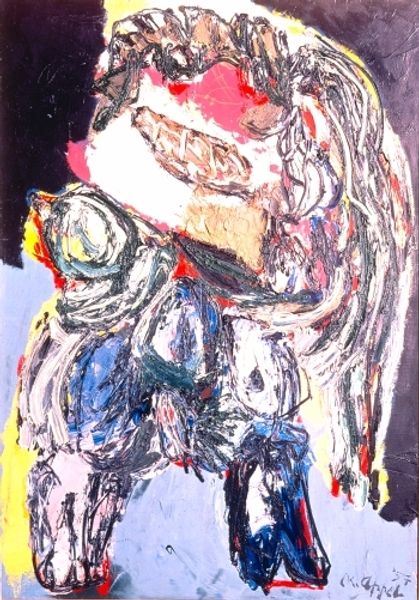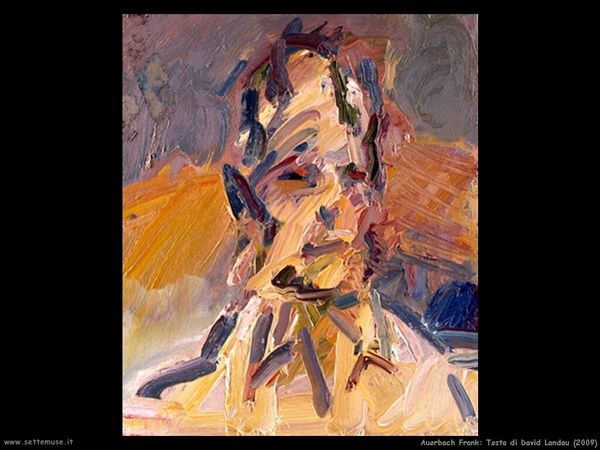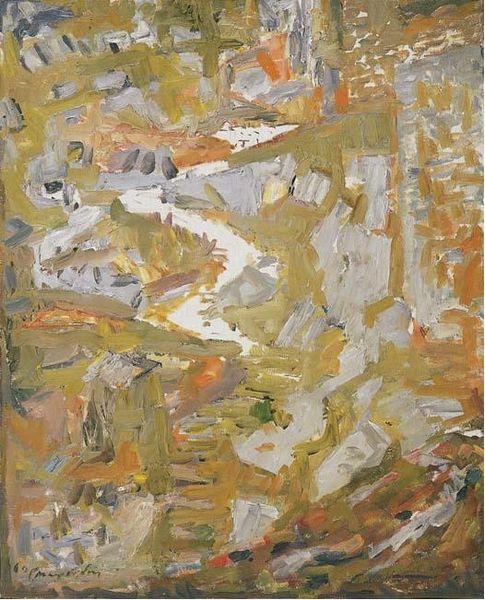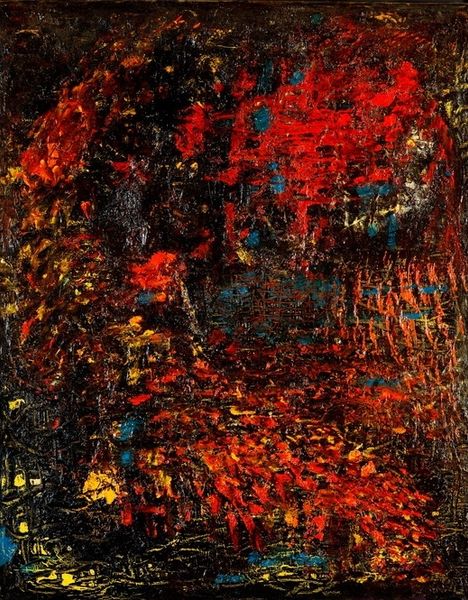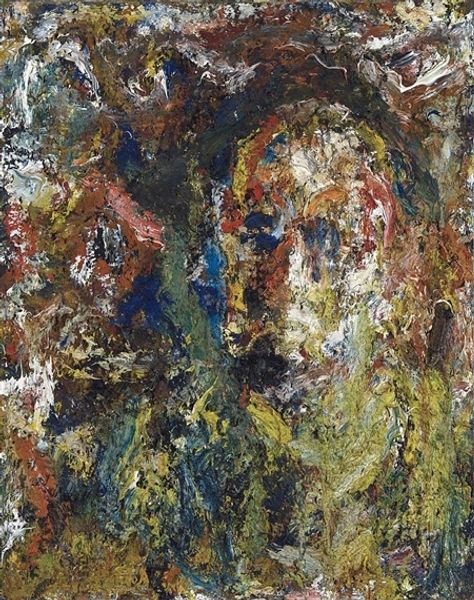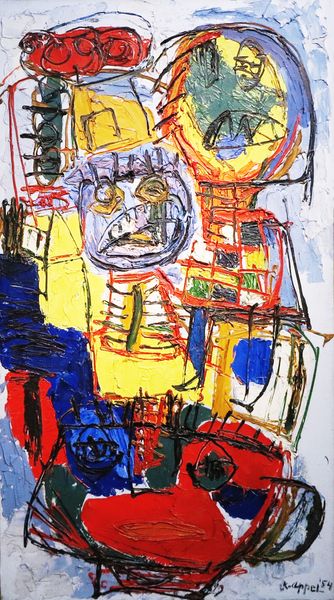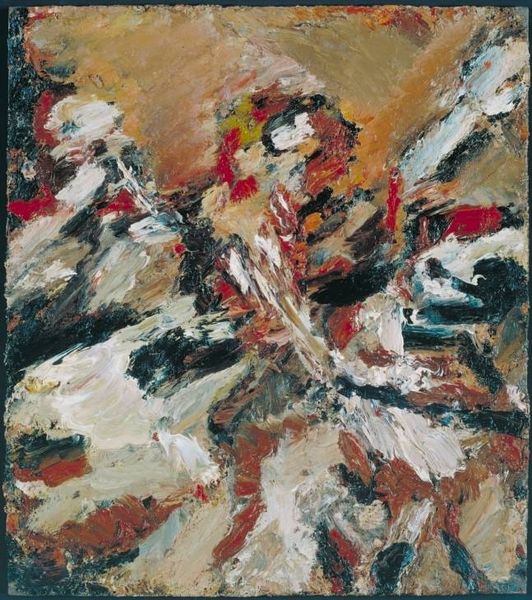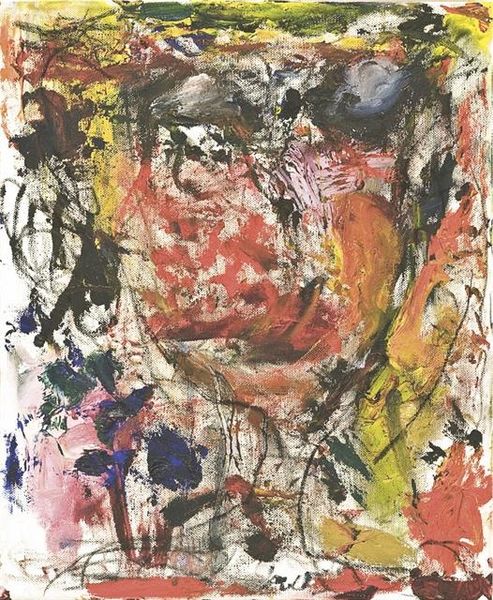
matter-painting, oil-paint, impasto
#
portrait
#
abstract-expressionism
#
abstract expressionism
#
matter-painting
#
head
#
oil-paint
#
figuration
#
oil painting
#
impasto
Copyright: Frank Auerbach,Fair Use
Curator: Frank Auerbach’s "Head of E.O.W. I," created in 1960. The impasto is striking. What's your first impression? Editor: Dense. It’s like a topographical map made of paint. Almost violent in its application. Makes you wonder about the sitter, E.O.W. What were the conditions surrounding their representation? Curator: Indeed. Auerbach was deeply invested in the physicality of paint. Look at how he builds up layers of oil, a near sculpture! We're talking about Abstract Expressionism but filtered through figuration—almost destroyed and reborn through matter. What could you say of E.O.W. regarding issues of gender, class, or visibility at this moment in time? Editor: I think it speaks to the mid-century crisis of identity. Post-war, what did it mean to represent the body, particularly a female body? The obscuring of features, the raw texture. I mean, consider Abstract Expressionism as largely male, right? Where would E.O.W., as the model, locate herself within the male gaze inherent in this type of painting? It resists easy consumption. Curator: Yes, the materiality fights the tradition of portraiture. This wasn't about passive representation; it was about labor, both the sitter’s and the artist's. E.O.W's presence is registered through a collaborative exchange—her endurance in sitting, Auerbach's relentless application. It challenges that neat, historical categorization of art production. Editor: Absolutely. By acknowledging the labor and context we’re disrupting art historical norms. The identity of the artist should also be viewed as produced by various circumstances and material factors. To understand the human, to feel human and vulnerable like the sitter. Curator: A perfect point. We're forced to confront the making—and being—of a subject, far beyond conventional portraiture. Editor: Thanks! Auerbach offers such a raw engagement that's both beautiful and disturbing. It encourages us to think about painting's capability to question, challenge, and affect the socio-political world around us.
Comments
No comments
Be the first to comment and join the conversation on the ultimate creative platform.
